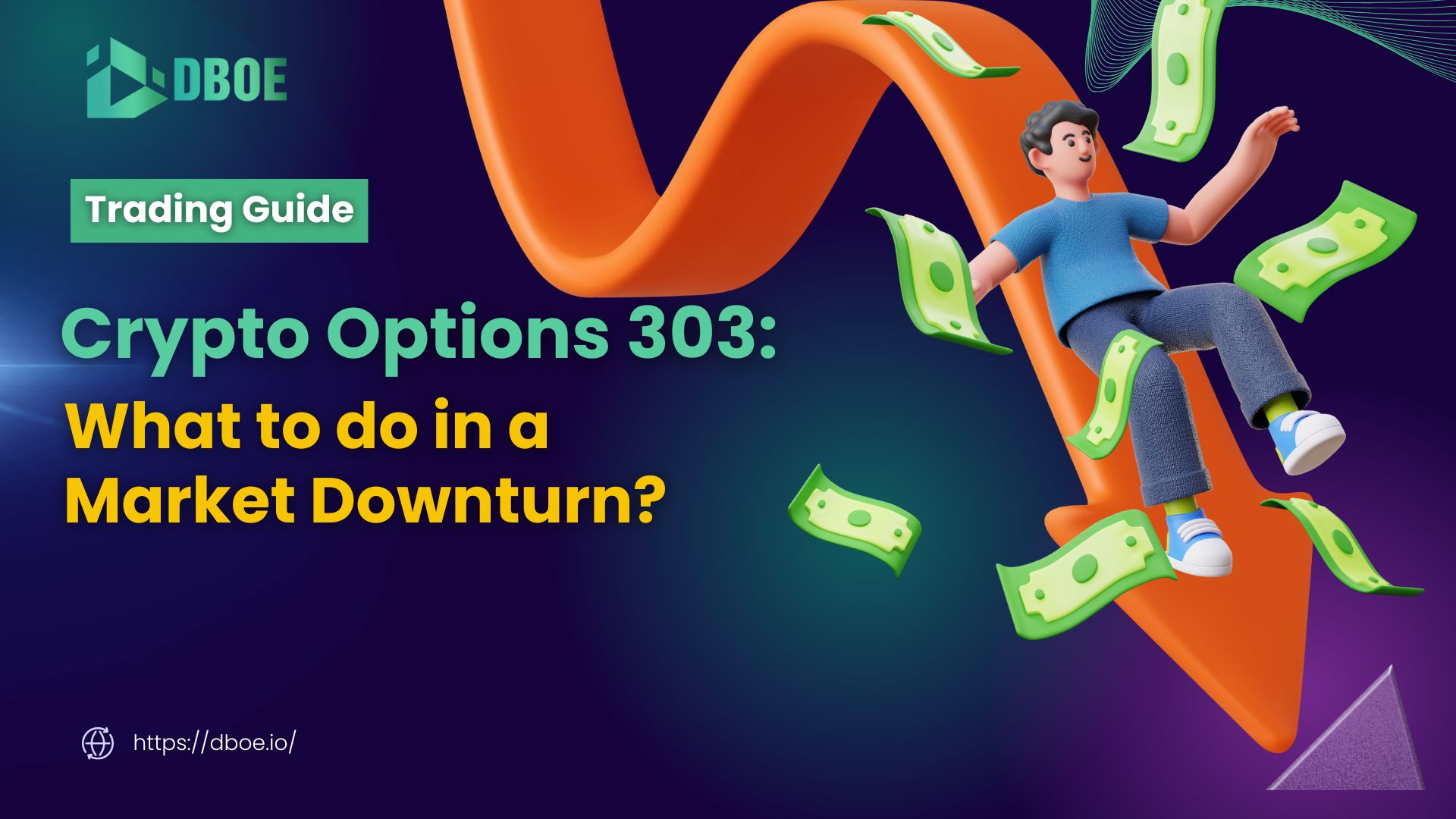During a market downturn, investors may face losses as the value of their holdings. However, downturns also present opportunities for experienced investors to hedge risks or even profit from falling asset prices through various strategies, including options trading.
What is a Market Downturn?
A market downturn refers to a sustained period where the prices of cryptos fall across the broader market or within specific sectors. This decline in prices can be caused by various factors, such as economic slowdowns, cyber attacks, rising interest rates, political tensions, or shifts in market sentiment.
Market downturns can be classified into different types based on their severity and duration:
- Corrections: A market correction occurs when an asset or market declines around 10% from its recent peak. Corrections are often seen as a natural part of market cycles and can provide buying opportunities for long-term investors.
- Bear Markets: A bear market however tends to identify a much longer lasting and serious downturn, typically defined by a 20% or greater drop in the value of major crypto currencies like Bitcoin or Ethereum. Bear markets often accompany recessions and periods of economic contraction.
- Crashes: A market crash is a sharp, sudden drop in asset prices, often within a single trading session or over a few days. Crashes are driven by panic selling and are typically triggered by unexpected events like financial crises, major cyber attacks, or political shocks.
How Can We Protect Our Portfolio in a Market Downturn?
When the market takes a bearish turn, investors often look for ways to protect their portfolios or capitalize on declining prices. Options trading provides various strategies that can benefit from such market conditions. Two of the most popular and effective options strategies for a market downturn are the Short Call and Long Put. Let’s explore these strategies, how they work, and why they are suitable for bearish markets.
1. Short Call Strategy
Definition: The Short Call is an options strategy where the investor sells a call option without owning the underlying asset. In simpler terms, it involves selling the right (but not the obligation) to another investor to buy crypto at a specified price (the strike price) before the option’s expiration date. The goal here is to profit from the premium received when the option is sold.
How It Works:
- When you sell a call option, you receive a premium from the buyer.
- If the market price of the underlying asset stays below the strike price until expiration, the option will not be exercised. You get to keep the entire premium.
- However, if the market price rises above the strike price, the buyer may exercise the option, and you will be obligated to sell the asset at the strike price, potentially incurring significant losses.
Why Use It:
- In a bearish market, asset prices are expected to decline or stay stagnant. In such conditions, the likelihood of the option being exercised is low, meaning you can safely collect the premium as profit.
- The maximum profit is limited to the premium received, while potential losses can be substantial if the market unexpectedly turns bullish, making it a risky strategy.
When to Use:
The Short Call strategy is suitable when you are confident the asset’s price won’t be able to rise higher in a specific amount of time, it could only fall or remain flat (sideways). But most investors only use this strategy when they calculate that the chances of price going sideways is the highest. It is ideal for advanced investors who have the ability to analyze market trends precisely as this is a high risk strategy which contains limited return but unlimited risk.
2. Long Put Strategy
Definition: The Long Put strategy is one of the simplest and most effective options strategies for a bearish market. It involves buying a put option, which gives the buyer the right to sell a stock at a predetermined price (strike price) before or at the option’s expiration date. A put option increases in value as the price of the underlying asset falls, allowing the trader to profit from a decline in the market.
How It Works:
- When you purchase a put option, you pay a premium for the right to sell the underlying asset at the strike price.
- If the market price of the asset falls below the strike price, you can sell the option for profit.
- If the market price remains above the strike price, the option will expire worthless, and the maximum loss will be limited to the premium paid.
Why Use It in a Market Downturn:
- A Long Put is highly effective in a bearish market because it directly profits from falling prices.
- The risk is limited to the premium you pay, making it a relatively low-risk strategy compared to a Short Call.
- This strategy can serve as a hedge to protect an existing portfolio against potential losses during a downturn.
When to Use:
A Long Put is ideal when you identify a sharp decline in the price of an asset and want to profit from or protect your portfolio against that fall. It’s a safer choice for investors who want a more controlled risk exposure. But remember only to use it when you can identify a drop because your options are still considered worthless if price goes sideways on the expiration date.
DBOE’s Solution
The options market is often seen as a space reserved for advanced investors due to its complexity and high risk. Options trading typically requires deep knowledge and experience, making it intimidating for newcomers.
To make options more accessible to new investors, DBOE has introduced a variety of features to help manage risk easier, one of the most effective features is Price Range. This innovative tool helps limit risk by setting predefined price ranges instead of Strike Price, allowing investors to know their maximum potential loss even when they write options. With this feature, even those with little experience can approach options trading with more confidence and a clearer understanding of their risks.
Why should you choose DBOE for Options?
Here’s why you should consider trading on DBOE:
- Wide Range of Underlying Assets: DBOE offers a diverse range of options including 5 of the 6 major options pairs.
- OB (On – chain Order Book): Ensure transparency and fairness, increase security.
- Price Range instead of Strike Price: Help investors to manage their risk more effectively
- User-Friendly Interface: DBOE’s platform is designed to make trading options intuitive and accessible for everyone, from beginners to advanced traders.
- Lowest requirements: Investors can start buy and sell their options from just $0.5
DBOE offers all the tools and features you need to navigate the world of crypto options with confidence. Whether you’re looking to hedge your crypto portfolio or capitalize on market movements, DBOE is the perfect platform to support your investment goals.
Learn step-by-step on how to trade options on DBOE now!
Start your options trading journey with DBOE today at: https://dboe.exchange/
or https://download.dboe.exchange/ on mobile.
Join our community on Telegram or Discord to stay updated with our latest news! 📲
Disclaimer: The information in this article is not intended as investment advice. Cryptocurrency investment activities are not legally recognized or protected in some countries. Cryptocurrencies always involve financial risks.





